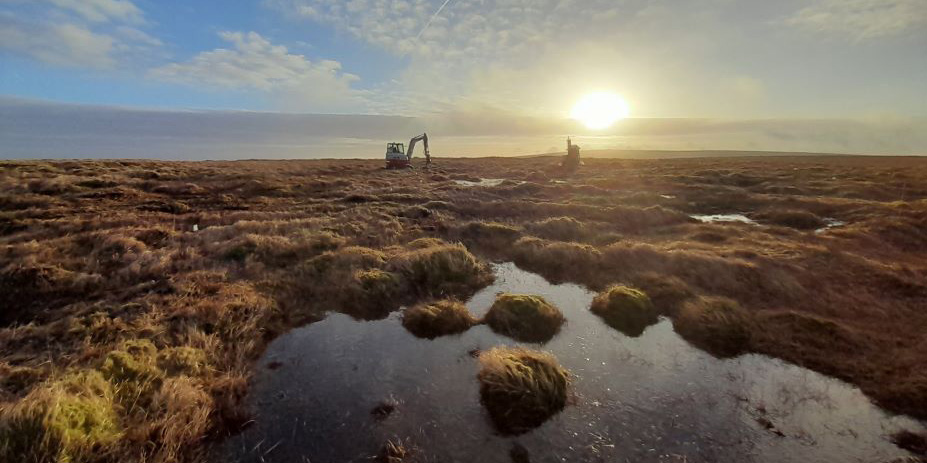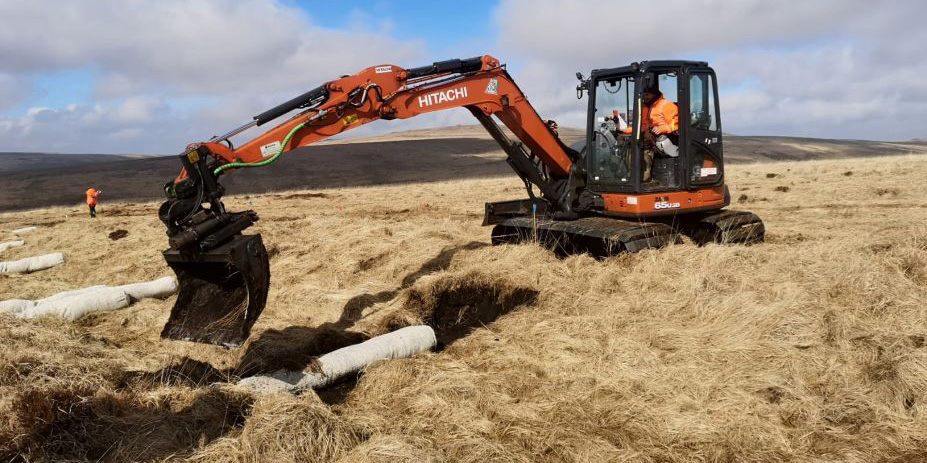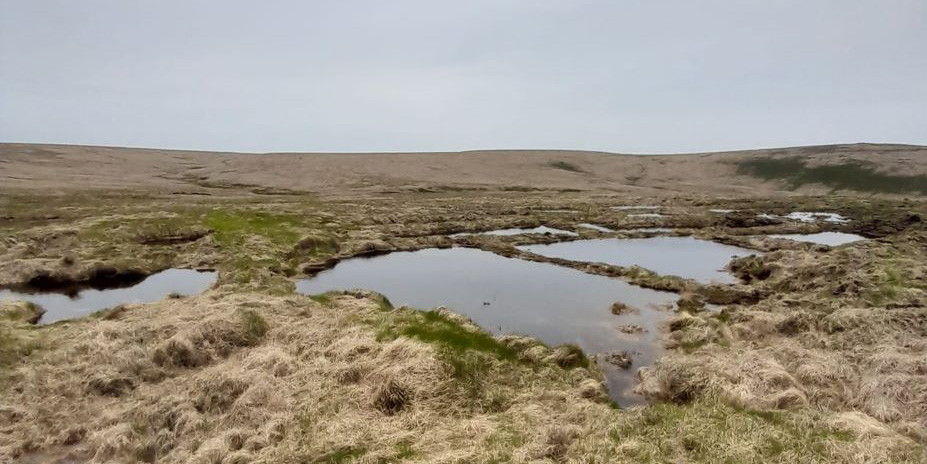South West Peatland Partnership
What is peatland restoration?
Peat is a type of soil formed from dead and partially decaying vegetation under waterlogged conditions and stores vast quantities of carbon. However unfortunately over 80% of the UK’s peatland is degraded, and needs restoring. Peatland restoration involves restoring peat bogs by blocking erosion gullies, drainage channels and peat cuttings, and re-wetting peat. Peat forming bog plants like sphagnum moss can recolonise restored areas helping the peat store more water and carbon.
Why do we need peatland restoration on Dartmoor?
The University of Exeter estimates that just 1% of Dartmoor’s deep peat area is healthy, peat-forming bog, whilst the majority has been severely damaged by drainage, cutting, drying and erosion. Peatlands restoration provides a huge opportunity to keep carbon locked in the peat bogs, create wildlife habitat, improve water quality, reduce downstream flooding and help drought resilience.
A haven for wildlife
Healthy peat bogs host an abundance of fascinating plants including sphagnum mosses, cotton grasses and carnivorous sundews. They are also home to threatened birds such as the most southerly breeding dunlin in Europe and support other wildlife such as dragonflies, frogs and beetles.
Telling Dartmoor’s story
Peat contains an invaluable historic archive. Pollen, micro-organisms, and artefacts are preserved in the layers of peat going back tens of thousands of years. Analysis of these fragments tells the story of how humans have used Dartmoor through the ages and how the natural environment has changed.
Case Study: Ockerton Court Peatland Restoration
Like many parts of Dartmoor now bathed in stillness, tell-tale signs around Ockerton Court give away clues of a continuously changing landscape meeting the demands of the time. Historic peat extraction, tin streaming activities and heavy military exercises have long gone, with new expectations of the area now in focus, such as food production, increasing biodiversity and taking carbon out of the atmosphere.
In this spirit of continuous change in the landscape, excavators temporarily disturbed this stillness at Ockerton Court, to block cracks and gullies within the blanket bog, created by the mentioned historic activities. Peat from the site has primarily been used as a material for creating blocks, as well as timber from nearby woodlands managed by the Woodland Trust. “Pillows” made from Dartmoor wool are also being trialled as a new blocking technique here.
Visually, such efforts have already seen more water being held in the area, suggesting a re-wetting of the peat to prevent further erosion, and creating environmental conditions for bog habitat to grow and thrive. The resulting pools have also appeared popular for livestock in drier periods as a source of water. All in all, the blanket bog at Ockerton Court is now on a journey to eventually absorb carbon out of the atmosphere, increase the habitat available for species of interest such as Curlew, and perform other ecosystem services such as water cleansing and flood prevention.
South West Peatland Partnership
Funded until 2025, the South West Peatland Partnership is a £13 million collaborative project aiming to restore 2,600 hectares of degraded peatland across the South West of England, on Dartmoor, Exmoor, Bodmin Moor and West Penwith.
The project is funded through Natural England’s Nature for Climate Peatland Grant Scheme (NCPGS), with match funding from South West Water, Duchy of Cornwall, National Trust and Cornwall Council, and in-kind support from partner organisations. Dartmoor National Park employs several of the SWPP team members including Restoration Officers, Historic Environment and Assistant roles under the Dartmoor Headwaters programme and plays a key role in the planning, local consultation, practical works, and public engagement with peatland restoration.
Visit the South West Peatland Partnership website for more information.



